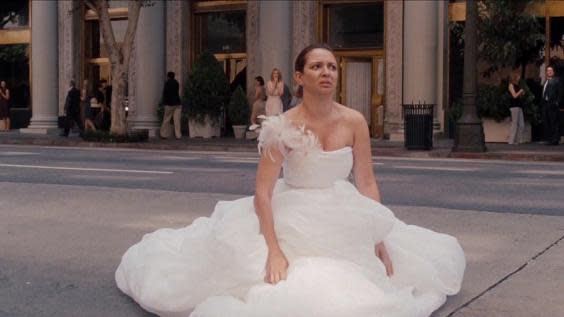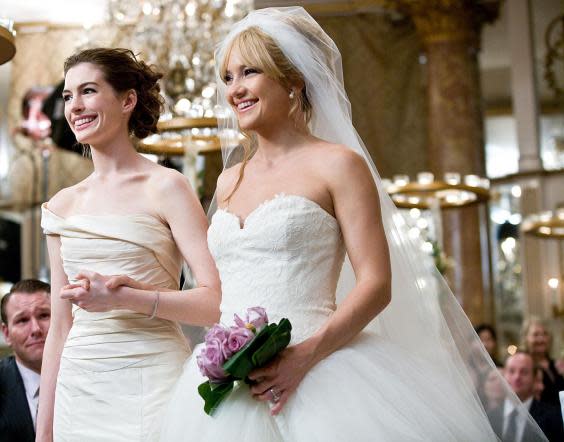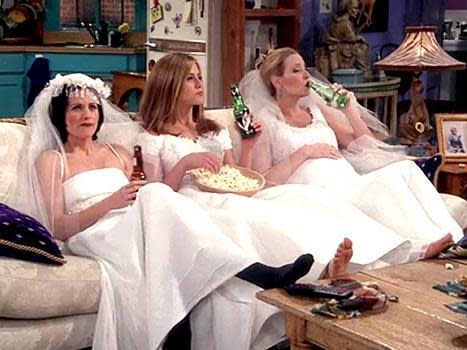Wedding dress shopping: Everything you need to know about buying a bridal gown
Shopping for a wedding dress is supposed to be fun – you are, after all, searching for a beautiful garment in which you will feel like a million dollars, for what will hopefully be one of the most enjoyable days of your life.
But some aspects of the bridal gown hunt can take all the fun out of that process. Is it the daunting prospect of being the centre of attention, even for just a few moments? Is it the challenge of trying to find a gown that will reflect your personality, in a sea of designs that are most definitely not you? Or is it the way insecurities seem to magically resurface in fitting room mirrors?
A few practical bits of knowledge that can help streamline your search and make it more enjoyable. Here is everything you should know if you are about to embark on your own quest for the perfect bridal outfit, from finding your favourite boutique to flying your garment to a different country if needed.
1. Go on a dress shop recce
It is perfectly normal, in my experience, to feel lost as you consider the wide range of possibilities awaiting you. Magazines, Pinterest boards, TV shows and social media all contribute to this state of sensory overload. Here is how you combat it: close the magazines, switch off your TV (or change the channel), and log off social media (a good idea, I am told, whether you’re shopping for a wedding gown or not).
Then, look up three to five bridal stores in your area, map out an itinerary that makes some sort of sense, and march yourself there. Before you leave, it’s a good idea to check each store’s policy on walk-ins. Most won’t let you try on dresses without an appointment, which is absolutely fine at this stage. Some will allow you to browse dresses but not try them on (great). Some will only let you look at a restricted part of the store (not so great).
The idea here is to get a barometer for what you like. Look at all the dresses. Touch the fabrics (if allowed). Pick up a couple of gowns from the rack and hold the hanger at shoulder height, just to get an idea of what it would look like on you. At this point, you’re not so much looking for your actual gown but rather familiarising yourself with the process. You will see other brides trying on their own dresses. You will see dozens of gowns, shoes, tiaras, veils and other accessories. Things will start to feel a bit less foreign.
By taking this little pre-shopping tour, you will also get a feel for each store. Is it uppity or more casual? Are the sales assistants helpful? Do you feel at ease? Can you picture yourself spending several hours (yes, really) here, stripping down to your underwear, and stepping out of your fitting room in a gown that may or may not fit? It’s worth picking a boutique (or several!) with an atmosphere that really suits you.
2. Try on everything - even the things you hate

Once you have checked out several shops, it’s time to make appointments. Note: some stores will ask for a credit card when you make your appointment, and they may charge you if you cancel later than their policy allows. Some stores will also charge a fee for the first appointment regardless of cancellation. Some keep appointments free of charge. Again, it’s worth checking each store’s policy to avoid surprises.
During your first official appointment, a sales assistant will most likely ask about your tastes and bring several models for you to try on. You might have an idea of what you want. You might also know what you absolutely do not want. When I searched for my own wedding gown in 2017, I turned out to be the kind of bride who had a long list of nos (lace, anything sparkly, long veils, tonnes and tonnes of tulle, anything that could remotely qualify as a meringue, and my personal nemesis: boleros) and very few yeses. Yet, during my first appointment, I gave it all a whirl: lace sleeves, spectacular trains, cathedral veils, tiaras, glittery belts, princess-y gowns, you name it. (The notable exception being boleros. A bride has to have her limits.)
While you may have deep-seated opinions (and, honestly, more power to you!), there is no downside to trying on a variety of styles. If you try on something you thought you wouldn’t like and your suspicions are confirmed, great! Now you can have even more confidence in your instincts. If it turns out you actually enjoy that specific style, wonderful! In your little répertoire of ideas it goes.
Plus, if you’re the kind of person who enjoys playing dress-up (and you might enjoy it more than you think), this is a rather unique occasion to have fun with dramatic styles you might never get to wear again. So try everything on – and bring a camera as well as a friend or relative to take photos of you in all your different outfits. One or two days after the appointment, look at the pictures to decide which looks you like best.
3. The dress should fit you - not the other way around
I know, easier said than done. Some people don’t have the luxury not to worry about sizing, because the bridal industry still has ways to go when it comes to catering to brides of all body shapes. And it can be daunting to purchase a dress knowing it will have to fit in a few months.
What I mean here is: don’t worry if you don’t know which size you need when you walk in for your appointment(s). Give the sales associate your best approximation and they will help you. Besides, there’s usually a limited range of sizes available on the floor anyway, so you will likely try on a dress that’s either slightly too small or too large (it can be clipped in the back to give you an idea of the fit). Once you decide to purchase it, you’ll settle on a size – and the design will get altered to suit your specific body shape.
4. Picking your dress is only the beginning

So you’ve been to your first appointment. Maybe one or two or three (or more!) dresses stick out in your mind as possible options. Now’s the time to make a follow-up appointment to try them on again.
Side note: even when you return to the store to try on a dress you have previously picked out, feel free to keep looking around for potential new styles. When I returned to the bridal shop to try on my favourite style from my own first appointment, a fun two-piece caught my eye on the store’s catalogue. I tried it on “just for fun”... and purchased it less than an hour later.
Once you purchase your outfit, it will be time for alterations. There is no fixed number of appointments here. It all depends on what you want and what your dress needs. But essentially, you will try on your gown and a fitter will pin it in all the right places. Your gown will go away for a little while, then you will return to the store and try it on again. The game continues until you think the dress is perfect. (Most people need three fittings.) Some stores have a flat fee for alterations, while others charge depending on the modifications needed. You may also want (or need) to hire your own tailor for this.
One last thing on this topic: it is recommended to buy your dress about eight months prior to the date of your wedding. Depending on how long you think it will take you to settle on a specific design, you might want to start your search a bit earlier than that – and if you’re having a destination wedding, you will probably want some extra time to get your dress to your location. Which brings us to:
5. Have an action plan if you're getting married abroad

You have found your dress. You have purchased your dress. Your dress is now altered to fit every curve of your body. You might be very reluctant to stick your dress in a suitcase and put it on the first plane to Bora Bora, or wherever you’re getting married. I completely understand. The last thing you want is for your dress (which is, at this point, literally unique) to get lost. So don’t put it in a checked baggage and hope for the best.
There are several things you can do instead – and you might want to start by liaising with your specific airline. Some might be able to place your gown (which you will have wrapped in a garment bag) in a safe spot or a closet on board. But there is another, fairly foolproof way to get your dress to its destination. I tried it myself when I flew my wedding dress from New York (where I live) to Paris (where I’m from and got married). Here is what you can do in this situation:
Accept that your dress won’t make it to your wedding location wrinkle-free. That’s OK. You’ll manage this once you’re there.
Place your dress in a garment bag. Then, place said garment bag in an empty carry-on suitcase that matches your airline’s dimensions. Yes, I know it hurts to squash those beautiful layers of tulle. Proceed carefully. Handle the garment bag delicately. The skirt on my two-piece was pretty poofy and it fit in a carry-on case. You can do it.
Keep your carry-on with you at all times. This is the entire point of this approach: your dress never leaves your eyes.
Plan ahead of time for your gown’s after-flight care. Personally, I (and by “I”, I mean my mother, who lives in Paris and was immensely helpful throughout the whole wedding planning process) made sure there was a dry cleaner who would be able to freshen up my dress after its transatlantic flight. The cleaner even lent me a mannequin on which to hang my gown prior to the wedding. People are willing to move mountains to help people before their nuptials.

6. Try not to have a meltdown
Yes, shopping for a wedding gown can be stressful. Although everything about planning a wedding is stressful. But this is the fun part! Your dress should make you feel great. You should be able to move around in it. (When trying on a specific model at the bridal store and during subsequent fittings, don’t forget to sit down. You’ll probably spend at least part of your wedding day sitting down and you don’t want any surprises.)
If something doesn’t feel right (be it the colour or the fit or any other detail), it’s not up to your body to change. The garment should change to suit your body, not the other way around. Go forth and don’t let the wedding industrial complex get you down. You’ve got this.

 Yahoo News
Yahoo News 
